Lee
and Karen Duquette,
The Two RV Gypsies: Full-Time RVers
at Theodore Roosevelt National Park in North Dakota
where they photographed wildlife
June 7, 2012 - Page 2 of 2

|
Lee
and Karen Duquette, |
|
The buffalo (Bison) is the largest mammal on the North American continent. This magnificent creature is a member of the Bovidae or cow family and was given its name by the early French explorers who called them "Ies boeufs," meaning oxen. Throughout the years, the name went through several changes from "buffle" to "buffelo" and finally to its present "buffalo." Bison is the correct scientific and common name, but buffalo has been used and accepted for many years. Bison are plant eaters. Though they generally have poor eyesight, bison have excellent hearing and a keen sense of smell. Bison reach maturity at seven or eight years of age and may live to the ripe old age of thirty. In 1956, 29 bison were obtained from Fort Niobrara National Wildlife Refuge in Nebraska and released in the South Unit of Theodore Roosevelt National Park. Here they roamed freely on 46,000 acres of park land. By 1962, the herd had increased to 145 individuals. Twenty of these animals (10 bulls and 10 cows) were shipped to the smaller 24,000-acre North Unit. Though both units of the park can easily carry larger numbers of bison, park managers have currently set herd size at approximately 300 animals for the South Unit and 100 for the North Unit to maintain the range in a healthy condition. Warning: Bison are wild animals and are dangerous if provoked. They can run up to 35 miles per hour and turn faster than a horse. Please view them at a distance from your car. |
|
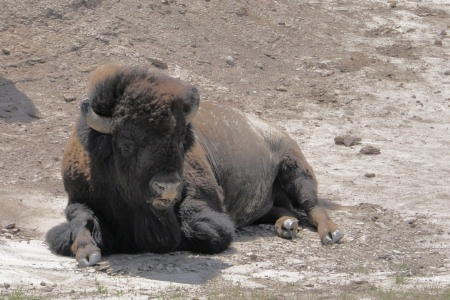 |
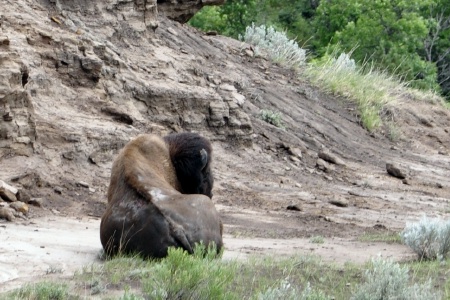 |
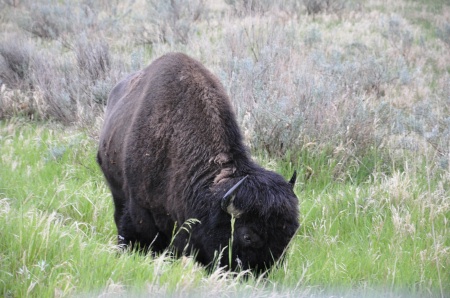 |
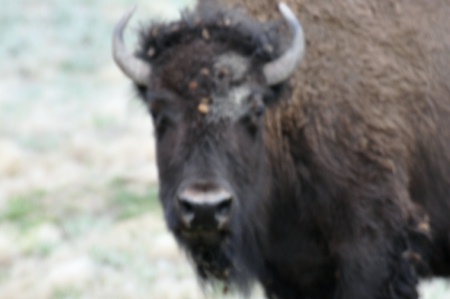 |
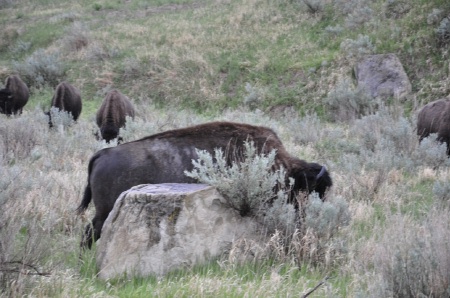 |
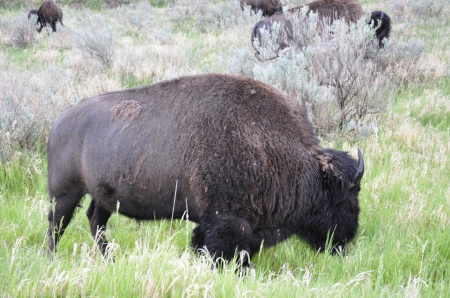 |
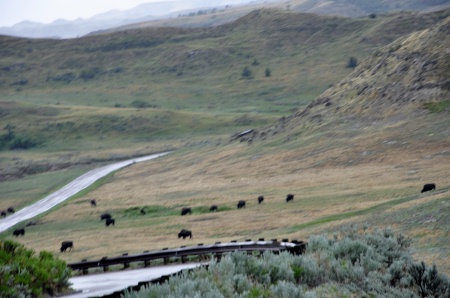 |
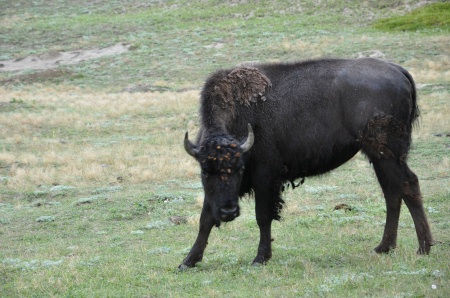 |
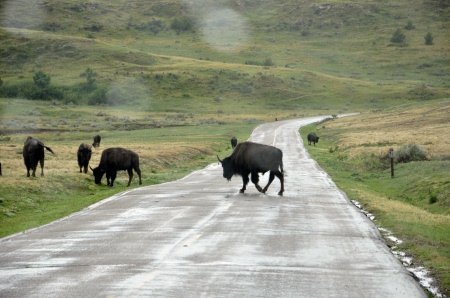 |
|
 Black-tailed
prairie dogs once ranged the Great Plains from southern Saskatchewan
to northern Mexico. Originally named petits chiens, or little
dogs, by early French explorers, these highly social animals are not
really dogs, but rodents. They are members of the Sciuridae or squirrel
family, closely related to ground squirrels, chipmunks, woodchucks and marmots.
There are five different species of prairie dogs, but only the black-tailed
prairie dog inhabit Theodore Roosevelt National Park. Black-tailed
prairie dogs once ranged the Great Plains from southern Saskatchewan
to northern Mexico. Originally named petits chiens, or little
dogs, by early French explorers, these highly social animals are not
really dogs, but rodents. They are members of the Sciuridae or squirrel
family, closely related to ground squirrels, chipmunks, woodchucks and marmots.
There are five different species of prairie dogs, but only the black-tailed
prairie dog inhabit Theodore Roosevelt National Park.
Prairie dogs are small, short-tailed animals with eyes and small ears set far back on their heads. Their light-brown fur blends well with the dirt of their mounds except when the animal has been blackened by burrowing into coal seams. Named for their bark-like warning call and black-tipped tail, prairie dogs average 14 to 17 inches in total length and weigh 1 to 3 pounds. With short, muscular legs and long-nailed toes on their front and hind feet, they are well equipped for a burrowing lifestyle. |
|
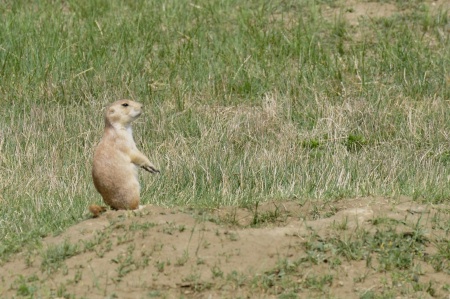 |
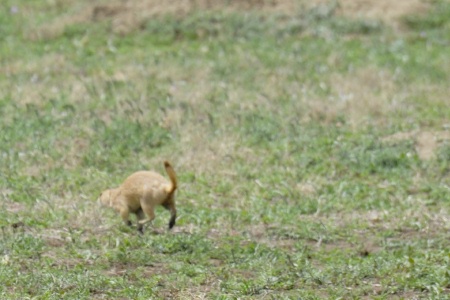 |
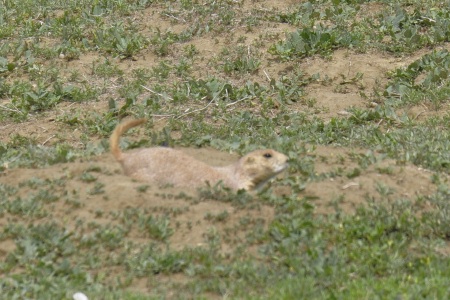 |
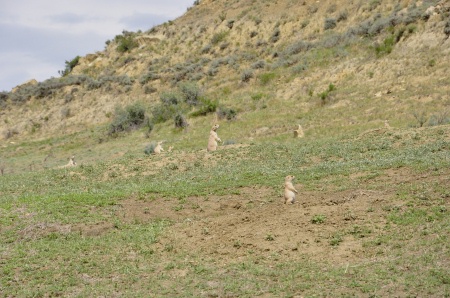 |
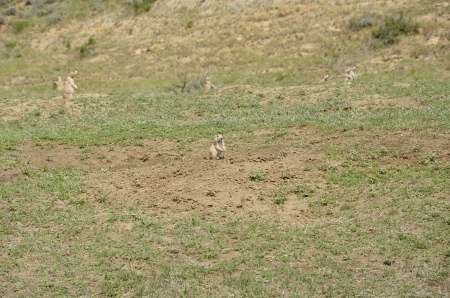 |
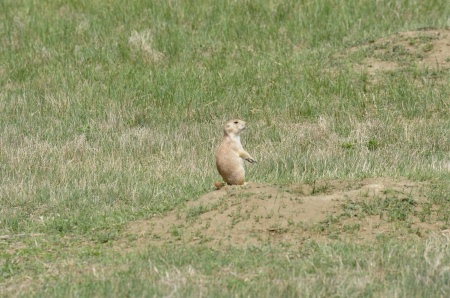 |
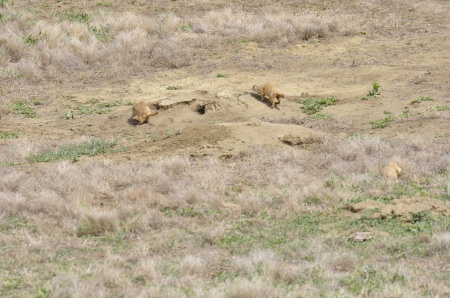 |
|
Below: The two RV Gypsies
also spotted a few pronghorns at Theodore Roosevelt National Park |
|
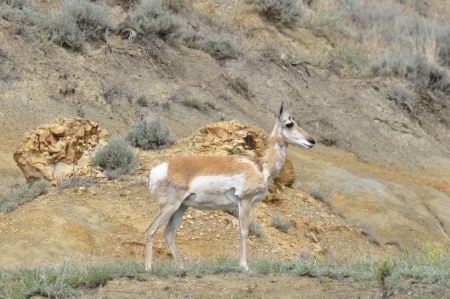 |
 |
Menu for the two RV Gypsies in North Dakota
|
|
|
|
|
Below are eight (8) sections of the adventures of the two RV Gypsies in North Dakota. You may view them in any order you wish. |
|
Rugby
- the Geographical Center |
|
The Painted Canyon |
The
International Peace Garden |
 |
|
After you have seen all of the above,Continue Navigation in any year, any place, in the order
of your choice |
|||||

|
|||||
 |
 |
 |
 |
 |
|
 |
 |
 |
 |
 |
|
 |
 |
 |
 |
 |
 |
 |
 |
 |
 |
 |
 |